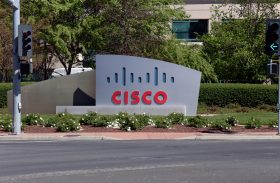The Broadband Renaissance Is Here

Broadband funding is on the rise worldwide, improving the prospects for companies that help deliver fiber to the home or business, where edge networking is demanding higher data rates and lower latency. For these firms supplying the essential building blocks for creating the network edge, business is exploding. So are a lot of questions.
First, some context: In the U.S., the rise of remote work boosted the federally sponsored Broadband Bill, the Federal Communications Commission’s (FCC’s) Rural Digital Opportunity Fund (RDOF), and other sources of government funding for broadband to areas where telcos once claimed to see no financial benefit to bringing broadband before. In Europe, a mix of government and private funding is quickly expanding broadband reach.
All this funding is contributing to a surge of spending that's better than it's been for decades. Jeffries analyst George Notter and colleagues put it in a recent note to clients:
"[I]t’s apparent that we’re entering the best Telecom Service Provicer capital spending environment we’ve seen in 20 years…. The rapidly-improving environment is being driven by the combination of new Federal Stimulus funding … and rising competitive intensity among broadband service providers as well as wireless operators. Of course, the Internet Content Providers are poised to massively increase their capital spending as well."
“PON”-dering Fiber Buildout
Worldwide, the press for more broadband coverage has pushed demand for fiberoptic networking, which remains the most economical means of extending broadband to the network edge. And that’s where companies such as Nokia (NYSE: NOK), Adtran (Nasdaq: ADTN), Calix (NYSE: CALX), DZS (Nasdaq: DZSI), FiberHome, Huawei, and ZTE are making a killing.
These are the vendors who make equipment for fiber-based broadband technology called passive optical networks, or PONs, which divide a single fiberoptic cable into multiple endpoints. Introduced at the start of the millennium, PONs haven't always featured among the sexier optical components making broadband headway. Now, with fiber playing a major role in the buildout of 5G networks and high-speed connectivity worldwide, PONs have become the primary means of extending fiber to the home or business worldwide in Europe and North America, according to analyst reports.
Much of this growth is in 1-Gbit/s PONs, called GPONs, or Ethernet-based PONs, called EPONs. There also is a rising need for 10-Gbit/s-capable PONs, standardized as XGS PONs, as well as for the 10-Gbit/s version of EPON. Notably, XGS PON is being used to support 5G connectivity. For even faster broadband, leading vendors offer multigig PON gear, which supports 10-Gbit/s on multiple ports.
A Bursting Market
The growth of PONs is reflected in the shipment of optical line terminals (OLTs) linking PONs at the carrier end and optical network terminals (ONTs) or optical network units (ONUs) on the side where edge networking connections are fed to customer sites. Both sides are ballooning in sales.
“#Omdia estimates that #PON OLT port shipments for North America increased 100% between 2020 and 2021 - more than 50% were 10G PON. Just think what could have been without supply chain challenges!” posted Julie Kunstler, Ovum principal consultant, broadband access, on LinkedIn.
Other firms corroborate startling PON growth. According to the Dell’Oro Group, growth in XGS OLT ports alone skyrocketed 500% in the first quarter of 2021 and were still seeing triple-digit growth in the third quarter of the year. And in North America, market leaders Nokia, Huawei, and Adtran all saw growth over 50% in the third quarter.
Stocks Up, Down, and Sideways
Interestingly, the explosive growth in the PON market isn't reflected in the share price of the smaller leading firms -- smaller than market leader Nokia, that is. Archrivals Adtran and Calix, for example, have shown considerable volatility in their stock over the past six months, as illustrated below:
Source: Google Finance
Source: Google Finance
Investors don't seem to know quite what to make of PON stocks. The confusing stock trajectory is reflected in the companies' earnings reports. For the third quarter of 2021, reported on November 1, 2021, Adtran reported sales of $138.1 million, up 4% year-over-year. But earnings for the quarter came in at a loss of $10.4 million, compared to a gain of $5.5 million in the year-ago quarter. Still, Adtran claimed bookings were up 43% year-over-year, and its market share was higher than Calix's, according to analyst reports.
For its third quarter 2021, Calix reported sales of $172.2 million, up 14% year-over-year, and net income of $177.4 million, up from $20.5 million in the year-ago quarter. Why was income greater than sales? "During the third quarter of 2021, we reversed a substantial portion of the valuation allowance against our deferred tax assets as we believe it is now more likely than not that we will utilize these assets over the coming years," stated the company in its note to shareholders. "This release and other changes amounted to $160.2 million, or $2.36 per share.
Revenues up, profits down. Profits way up, but not because of sales. Clearly, the PON companies are being challenged by their overwhelming good fortune to take a long, hard look at how they're running things.
Maybe things can shift forward as the broadband money makes it to the market in 2022. The explosion of fiber activity is boosting a market in access gear that has been steadily growing among a small number of suppliers with longstanding experience. But good fortune, like bad, challenges players to examine how they do business. In a sense, the broadband renaissance has waked a sleeping giant. Expect to hear much more about this segment in 2022.













